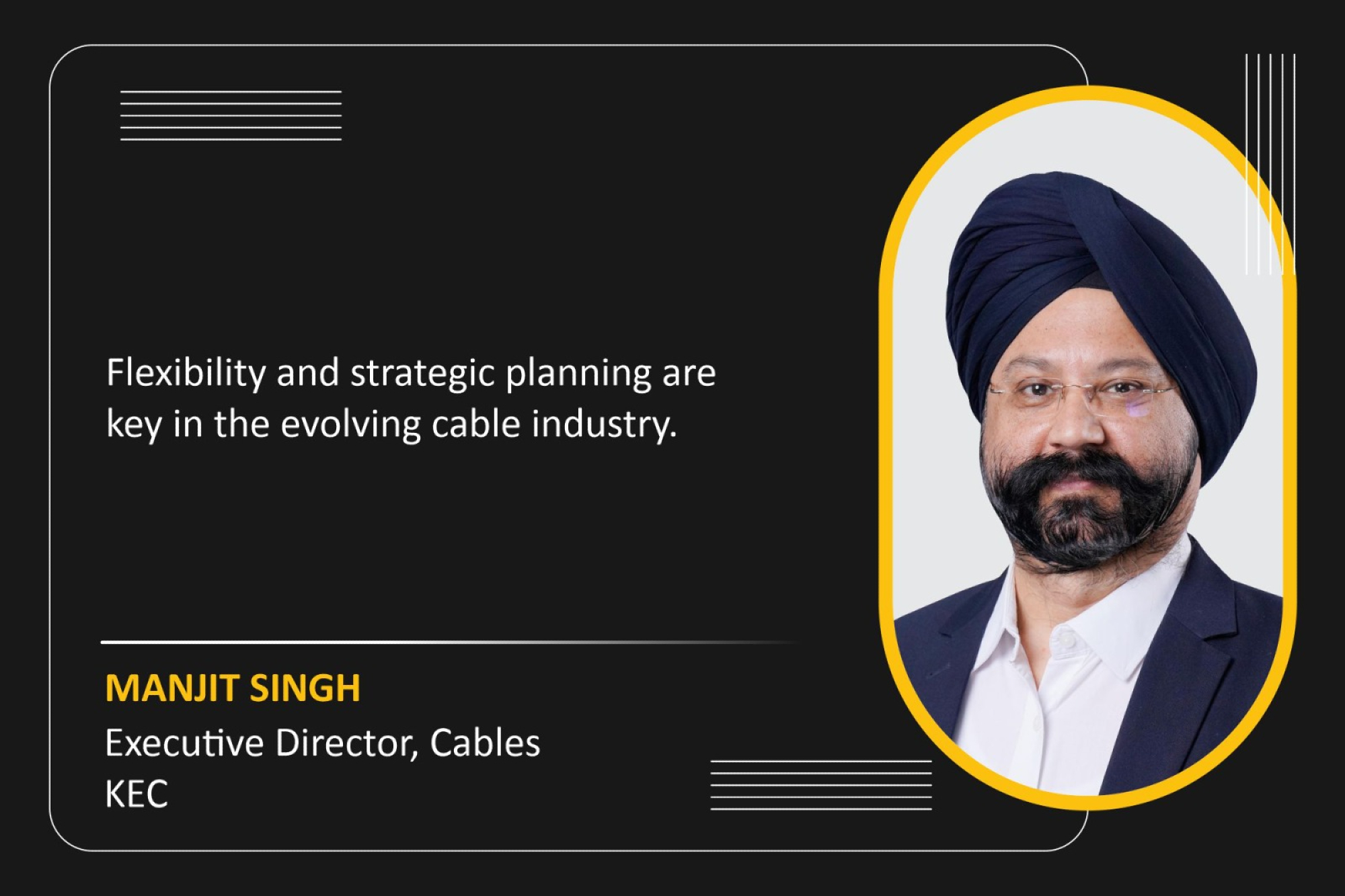Leading cable manufacturers are raising investments to meet the demand.
By EPR Magazine Editorial November 14, 2024 1:51 pm IST
By EPR Magazine Editorial November 14, 2024 1:51 pm IST

Green cables provide thermal protection up to 105°C, ensuring safety by producing low smoke and emitting fewer toxins during fires
Green and smart cables ensure reliable power transmission with minimal environmental impact and strengthen smart grids to meet modern demands. In digitised smart cities, these cables incorporate energy-efficient solutions critical for sustainable urban growth. Let us know more from Manjit Singh.
How do hybrid and green cables enhance infrastructure reliability and sustainability?
Hybrid cables, which combine EHV/HV Power with Optical Fibre Cables, not only improve power distribution but also enable real-time monitoring, enhancing the reliability of smart grids. Green cables, meanwhile, provide thermal protection up to 105°C, ensuring safety by producing low smoke and emitting fewer toxins during fires. This makes them particularly suitable for high-power-demand environments like data centres. These innovations support the shift to cleaner energy while enabling efficient energy and data transmission, forming the backbone of future sustainable infrastructure.
How can cable manufacturers achieve profitability amid evolving industry demands and regulations?
Flexibility and strategic planning are key in the evolving cable industry. Manufacturers focus on boosting capacities and improving operational leverage for profitability to remain competitive. Investing in backward integration helps reduce supply chain disruptions and stabilises growth. With market shifts toward solar energy and data centres and focusing on industrial growth, product innovation is essential for meeting new demands and staying cost-competitive. Technological advances make digitised factories crucial for increasing production and reducing waste. Changing regulations also impact the industry; fire-resistant cables have become mandatory, and anti-rodent fibre optic cables will strengthen telecom infrastructure. Staying ahead of these trends is vital for a competitive edge.
Leading cable manufacturers are increasing investments in response to surging demand and a projected 20 percent CAGR in cables until FY30. Upgrading manufacturing technologies will reduce downtime and waste while delivering faster, more reliable, and energy-efficient products. This expansion requires advanced machinery and skilled labour capable of leveraging these technologies.
How can the government support the cable industry amid supply chain challenges?Recent factors have transformed revenue generation in the cable industry. The shift toward renewable energy, with a target of 500 GW by 2030, drives demand for solar cables. Increased capital expenditure in both public and private sectors has expanded the need for cable deployment. The growth of 5G infrastructure is also creating significant opportunities for Optical Fibre Cables. Domestic cable manufacturers currently hold just 2 per cent of the global market, highlighting the significant potential for export growth.
However, supply chain disruptions present challenges. Global conflicts have escalated freight costs and delivery uncertainties. The aluminium shortage in FY24 has increased reliance on costly imports, and EHV compound supply remains import-dependent. Government support in overcoming these hurdles would enable cable manufacturers to contribute significantly to the country’s growth.
The electrical systems industry is evolving, so where does your company stand?
The electrical systems are continually evolving to meet growing consumption needs. With per capita electricity consumption in India being among the lowest globally, there is substantial potential for new installations and upgrades to older systems. Domestically, the transmission market is set for robust growth, driven by the government’s focus on renewable energy and plans to integrate over 500 GW of renewable energy capacity by 2030. This presents a major opportunity for transmission conductors. Globally, the market is projected to grow at a CAGR of 7 percent. Additionally, there has been a shift toward specialised conductors designed for increased power flow, which require aluminium alloy rods. Our company is well-positioned to meet this demand with our new aluminium plant, equipped with state-of-the-art machinery and a capacity of 3000 MT. With this facility, we are committed to producing high-quality products to support the evolving needs of the transmission market.
We use cookies to personalize your experience. By continuing to visit this website you agree to our Terms & Conditions, Privacy Policy and Cookie Policy.